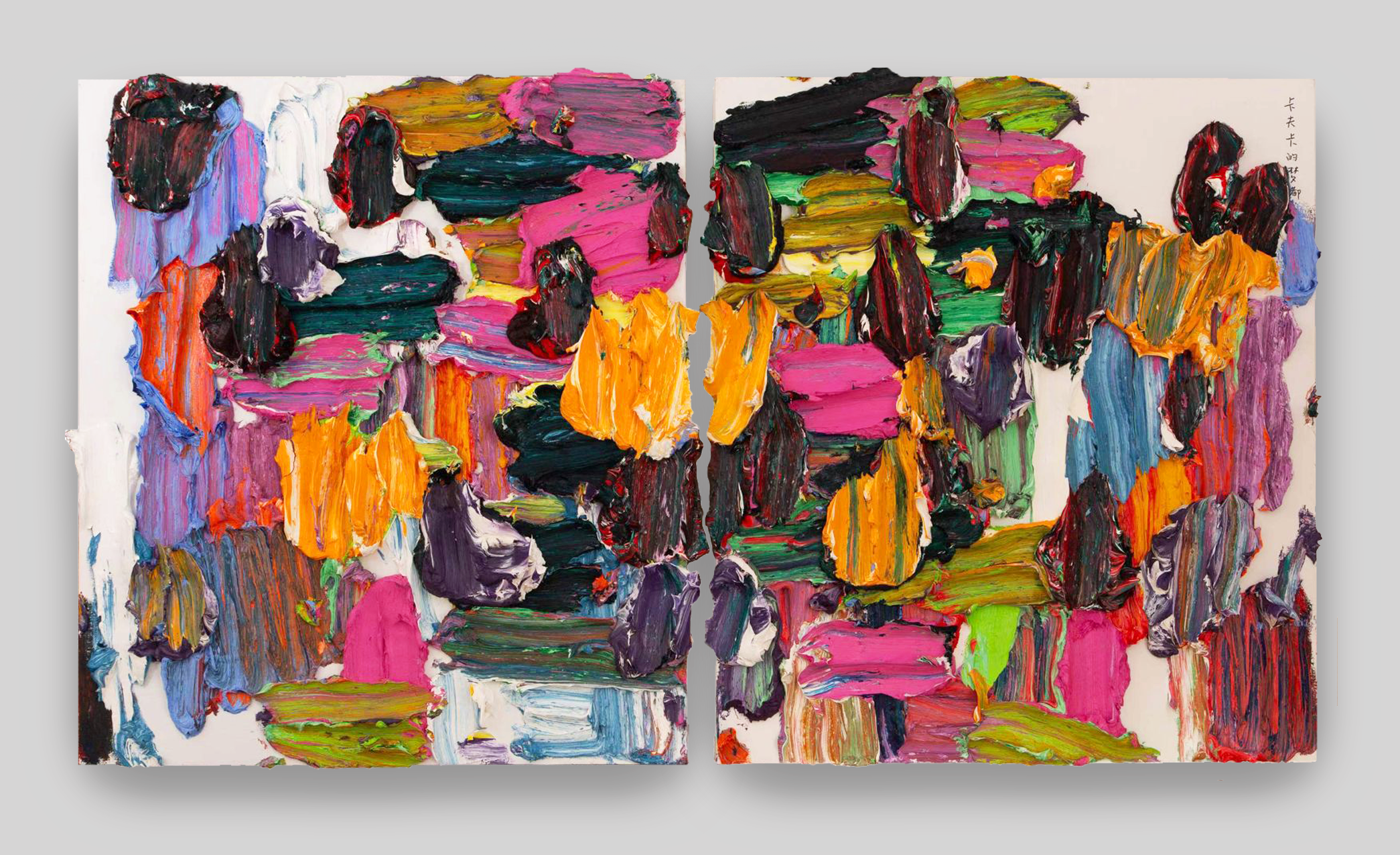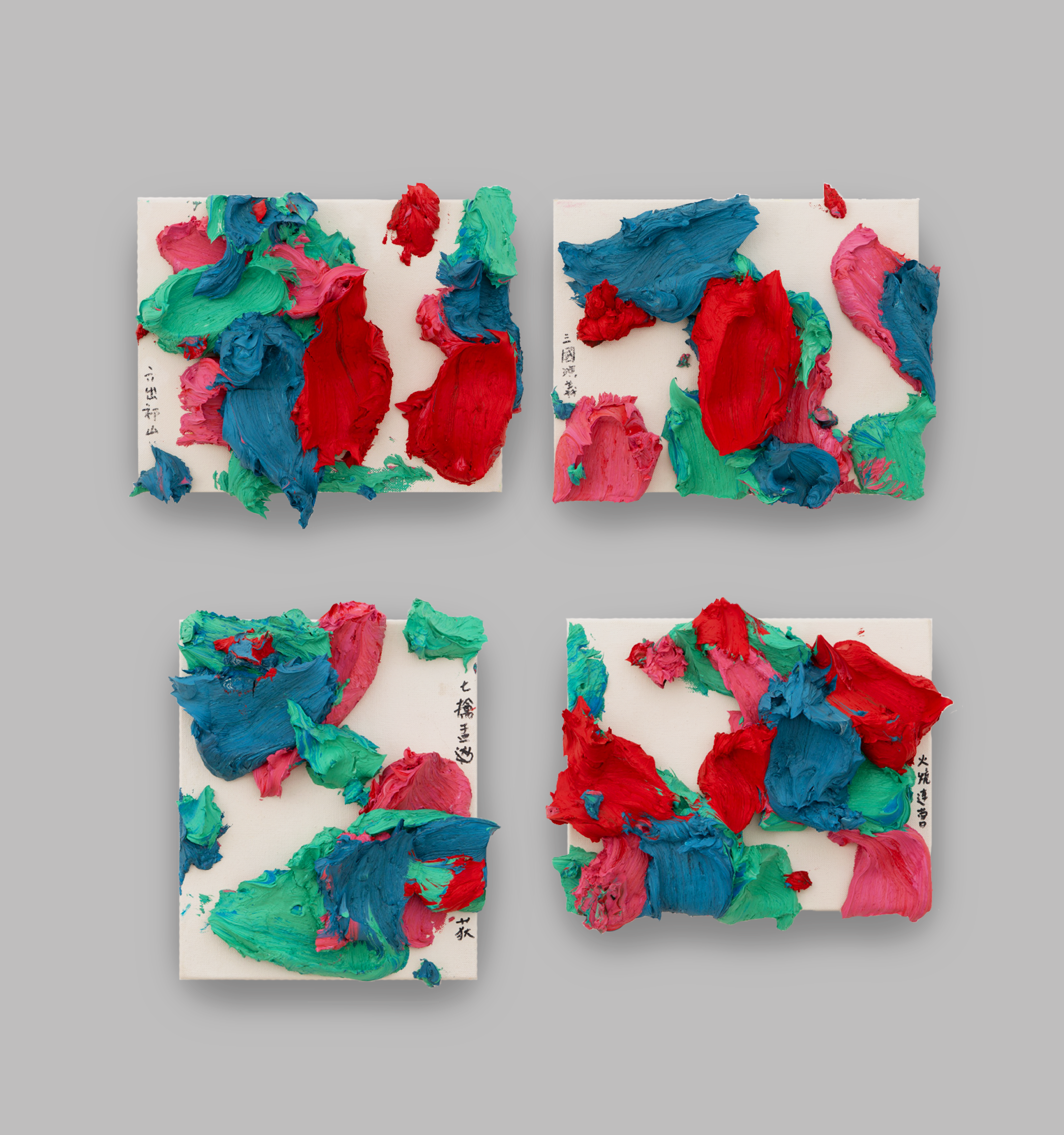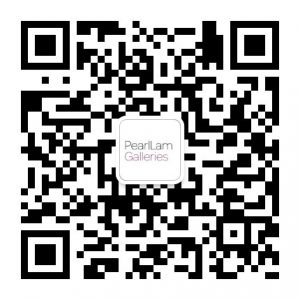Zhu Jinshi (B. 1954)


Biography
Zhu Jinshi, born in 1954, a Chinese born German artist. He is a pioneer of Chinese abstract art and installation art. He began to create abstract paintings in the early 1980s and moved to Berlin in 1986. Since then, he has been experimenting with performance, installation, and conceptual art. In 1994, Zhu returned to China, dividing his time between Berlin and Beijing until 2010. At present, he lives and works in Beijing.
Looking back at Zhu Jinshi’s art practice over the past forty years, abstract painting and conceptual installation are two practices that parallel each other while sometimes being confrontational. Zhu started his career with abstract painting, but while his installation practice stands alone from his painting practice, it has also inspired new forms of painting. Only when the two are viewed together can the striking aesthetic value of Zhu’s works be touched.


Zhu Jinshi’s paintings were first influenced by modernism. Three of his works were exhibited in China’s first avant-garde exhibition, the Stars Group Exhibition, in 1979. As one of the first Chinese artists to create abstract art, Zhu initially experimented with random brushstrokes and limited colour to create abstract paintings. He gradually developed his unique “thick painting” style that he still uses today, which is usually applied with heavy colour and thick paint.
In contrast to the Western mainstream post-1990s compositionist, neo-geometric abstract painting, he compared the differences between art techniques and philosophies at a macro level during his roundtrips between Beijing and Berlin over the past twenty years. Although the strong styles of Gerhard Richter, Julian Schnabel, Per Kirkeby, and Kazuo Shiraga in the 1980s impressed him, when he returned to painting after 2000, Zhu identified more with the direction of newer artists such as Albert Oehlen and Cecily Brown, focusing on his own experience and disregarding the idea of traditional abstraction.

Art critic and professor Gao Minglu says, “Unlike the formal rhythm of modern abstraction, which relies mainly on the charm of self-expressive brushstrokes, the expressive power of Zhu Jinshi’s ‘thick paintings’ comes more from the stubbornness and fluidity of the objects (paint) themselves.” He uses strong and tense techniques, employing palettes, wall trowels, wooden shovels, and fifteen-centimetre brushes to apply heavy colours of paint onto the canvas. The shaping of two-dimensional space and the spirituality emphasised in the history of abstract painting are not his interests; instead, his works are sculptural and three-dimensional with the effect of his materials. The gaps, fractures, white space, thickness, and paint form a self-contained visual system. This sense of monumental objects makes Zhu’s paintings not only an art of space, but also an art of concept.
In contrast to his prior painting practices, Zhu’s exploration of conceptual art, performance, and installation began in the late 1980s when he lived in Germany. He took the initiative to dissolve the existing formalist experience and add a focus on social issues.
In 1988, Zhu developed the “FANG ZHEN” art project, in which he set up a cubic metre of linen in Berlin, Germany, and a cubic metre of rice paper in Beijing, connecting two cities and cultures through four sections in this project: display, visiting, participation, and barriers. In 1989, he created the work Exile, a homemade raft with many bottles of Chinese export soy sauce tied to it, depicting the pursuit of his cultural identity. The relative lack of public exhibition space in China in the 1990s prompted a group of artists who had emigrated overseas to open up their private apartments as experimental exhibition spaces. Zhu’s residence in Ganjiakou, Beijing became an active gathering place for artists at the time.
What has made Zhu Jinshi internationally known is his surprising use of materials such as rice paper and bamboo in his installations. In works such as Impermanence, Boat, and Tao of Xuan Paper, the physical qualities and cultural attributes of paper itself are dissolved; instead, the soft papers are given an architectural volume, lightly stacked to become complex and tough. In the open space, the art shifts from private to public, and the works extend together with the space to become a special structural landscape. Zhu Jinshi’s large-scale rice paper installation Rice Paper Pagoda was exhibited at the 60th Venice International Art Biennale’s China Pavilion exhibition project, Atlas: Harmony in Diversity, from April to November 2024.
As the earliest practitioner of abstract and installation art in China, Zhu Jinshi’s creations have shown great vitality and extensibility, and this quality continues to exist in his current creations. His works are not limited by artistic mediums or times, but rather transcend geography and differences in Eastern and Western identity, taking a macro perspective and sketching a personal history of artistic evolution in the context of contemporary global culture.
Zhu’s solo exhibitions include Ganjiakou 303 (2018), Pearl Lam Galleries, Shanghai, China; Detached from Colour (2016), Pearl Lam Galleries, Hong Kong, China; Zhu Jinshi (2015–16), Yuan Art Museum, Beijing, China; Zhu Jinshi (2016), Blum & Poe, New York, USA; Performance in Paint: Zhu Jinshi (2015), Inside-Out Art Museum, Beijing, China; Zhu Jinshi: Boat, a Yi Pai installation (2015), organized by Pearl Lam Galleries at Exchange Square, Hong Kong, China; Zhu Jinshi: Simplicity (2014), Pearl Lam Galleries, Singapore; Zhu Jinshi: The Reality of Paint (2013), Pearl Lam Galleries, Hong Kong; and Zhu Jinshi (2012), Blum & Poe, Los Angeles, USA.
Group shows include The Allure of Matter: Material Art from China (2020), Smart Museum of Art and Wrightwood 659, Chicago, USA; Inaugural exhibition (2019), Rubell Museum, Miami, USA; The Allure of Matter: Material Art from China (2019–20), Los Angeles County Museum of Art, Los Angeles, USA; A Fairy Tale of Red Times: Works from the White Rabbit Collection (2019), National Museum of Victoria, Melbourne, Australia; Black (2016), Blum & Poe, Los Angeles, USA; 28 Chinese (2015), San Antonio Museum of Art, San Antonio, USA and Asian Art Museum, San Francisco, USA; Perfection by Chance—A Yi Pai Series Exhibition (2015), Pearl Lam Galleries, Hong Kong, China; Thick Paint: Jean Fautrier, Franz West, Zhu Jinshi (2014), Luxembourg & Dayan Gallery, New York, USA; 28 Chinese (2013), The Rubell Family Collection, Miami, USA; Orient/Ation, 4th International Istanbul Biennial in Turkey (1995), Istanbul, Turkey; and the 1st Xing Xing (Stars Group) Exhibition (1979), Gallery in Beihai Park, Beijing, China. Zhu Jinshi’s works have been collected internationally by notable public and private collections.
Exhibitions
News & Press
25 Apr 2024
Zhu Jinshi’s Rice Paper Pagoda on show at the 60th Venice International Biennale, China Pavilion
Pearl Lam is delighted to announce that gallery artist Zhu Jinshi’s large-scale rice paper installation Rice Paper Pagod...01 Mar 2018
BARRON’S | The Armory Show Aims to Spark ‘Critical Dialogue’
Feb 28, 2018 | by Abby Schultz Zhu Jinshi, Mistaken Dream of the Lotus Pond, 2014, oil on canvas, triptych, presented by...19 Mar 2016
ArtAsiaPacific | CONTEMPORARY ASIAN ART AT TEFAF 2016
CONTEMPORARY ASIAN ART AT TEFAF 2016 BY PAUL LASTER New to TEFAF 2016 is Pearl Lam Galleries, which has locations in Hon...05 Nov 2015
‘Performance in Paint: Zhu Jinshi’ Solo exhibition at Inside-Out Art Museum, Beijing, 14 November 2015–31 January, 2016
Beijing—Pearl Lam Galleries is pleased to announce the opening of Performance in Paint: Zhu Jinshi at Inside-Out Art Mus...25 Mar 2015
Wallpaper* | Light Shows and Pink Feathers: How Art Basel 2015 Took Over Hong Kong
Wallpaper has published a review on Zhu Jinshi: Boat at Exchange Square and Ren Ri: Yuansu Projects at Hong Kong SOHO Pe...25 Mar 2015
South China Morning Post | Hong Kong Full of Creativity as Galleries Channel Art Basel Buzz
South China Morning Post has published a review on Zhu Jinshi: Boat at Exchanged Square and Perfection by Chance –...21 Mar 2015
South China Morning Post | Focus on Traditional and Contemporary Chinese Art
South China Morning Post focused on traditional and contemporary Chinese art that can be seen around the city. There is ...29 Nov 2014
Pearl Lam Galleries Artists Zhu Jinshi And Qin Yufen | “Art Space Germany” in CAFA Art Museum
Art Space Germany An Exhibition by the ifa (Institut für Auslandsbeziehungen) Presented by the Goethe-Institut China and...29 Nov 2014
Rising Stars Of Chinese Contemporary Art: Interview of Pearl Lam
We are pleased to share the interview of Pearl Lam on Christie’s website. Asian Art | Interviews | November 13, 20...25 Nov 2014
Pearl Lam Galleries Artist Morgan Wong And Zhu Jinshi | Cosmos: Opening Exhibition Of Shanghai 21st Century Minsheng Art Museum
Exhibition dates: 22 November 2014 – 19 April 2015 Cosmos is the opening exhibition of Shanghai 21st Century Minsh...08 Jul 2014
Bazaar Men Lifestyle | About Pearl Lam gallery at Art Basel Hong Kong
Bazaar Men Lifestyle magazine features an article about Art Basel in Hong Kong, including the sales record of Zhu Jinshi...18 Apr 2014
Artsinfocus | Madhusree’s blog, “Zhu Jinshi Boat Miami Art Basel”
Hong Kong, Dec 2 Chinese contemporary artist Zhu Jinshi, who experiments with diverse mediums and materials to create av...18 Apr 2014
Interview Magazine | “How Zhu Jinshi’s Boat Travels”
12 December 2013 Interview Magazine, How Zhu Jinshi’s Boat Travels, 12 December 2013...04 Nov 2013
artBahrain | CHINESE MASTER ZHU JINSHI PRESENTS ‘BOAT’ – Centrepiece of 28 CHINESE at the Rubell Family Collection
Boat, a monumental 12-metre walk-in installation composed of bamboo, cotton and 8,000 sheets of Xuan (rice) paper create...02 Aug 2013
Art Emperor | Zhu Jinshi’s Solo Exhibition at Hong Kong Pearl Lam Galleries
May 22, 2013 Art Emperor-Zhu Jinshi...13 Mar 2013
Wallpaper* | Gallerist Pearl Lam docks Zhu Jinshi’s ‘Boat’ at Art13 London
An ambitious paper and bamboo installation by Chinese artist Zhu Jinshi was the centerpiece of Art13 London, a new inter...11 Mar 2013



